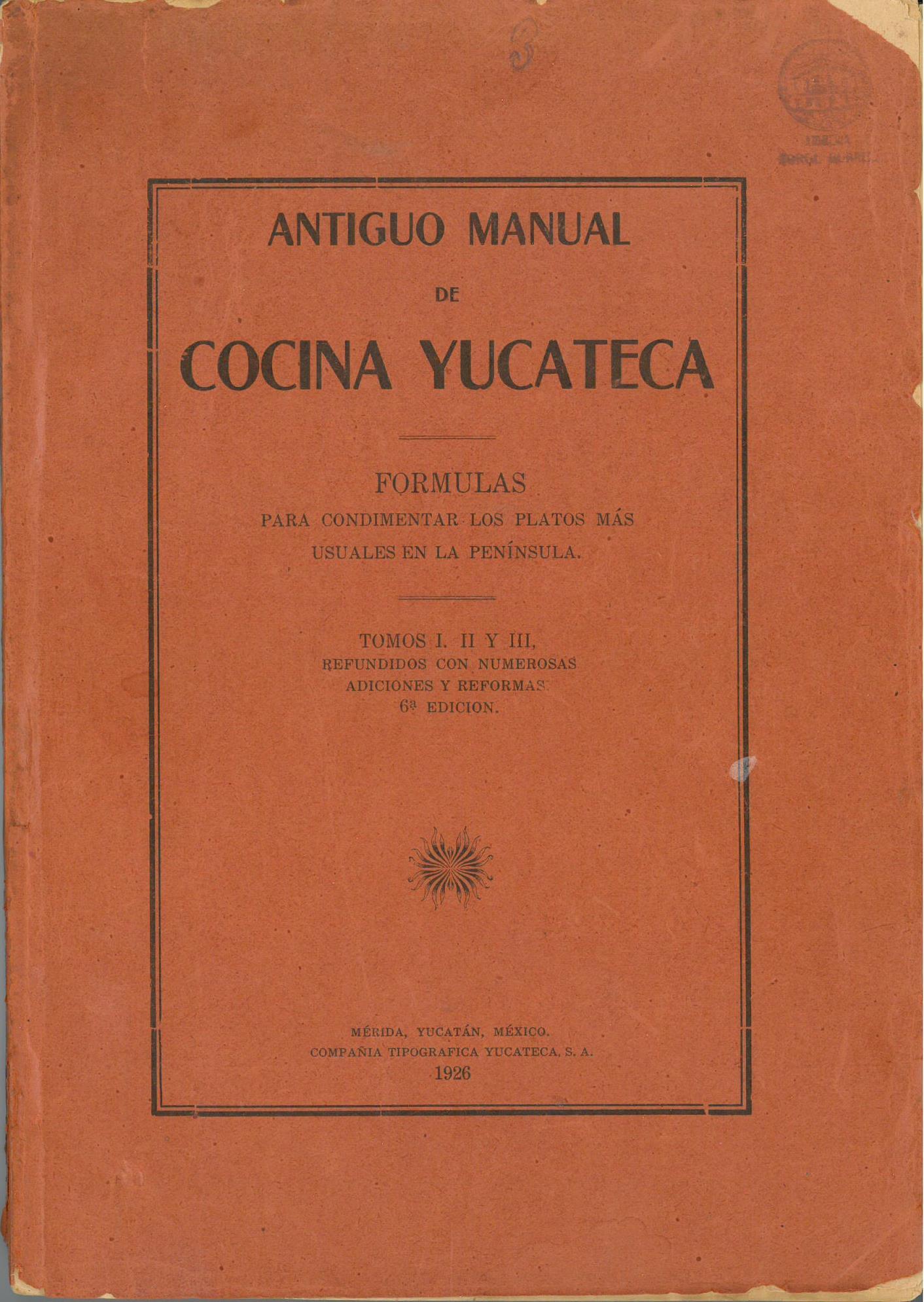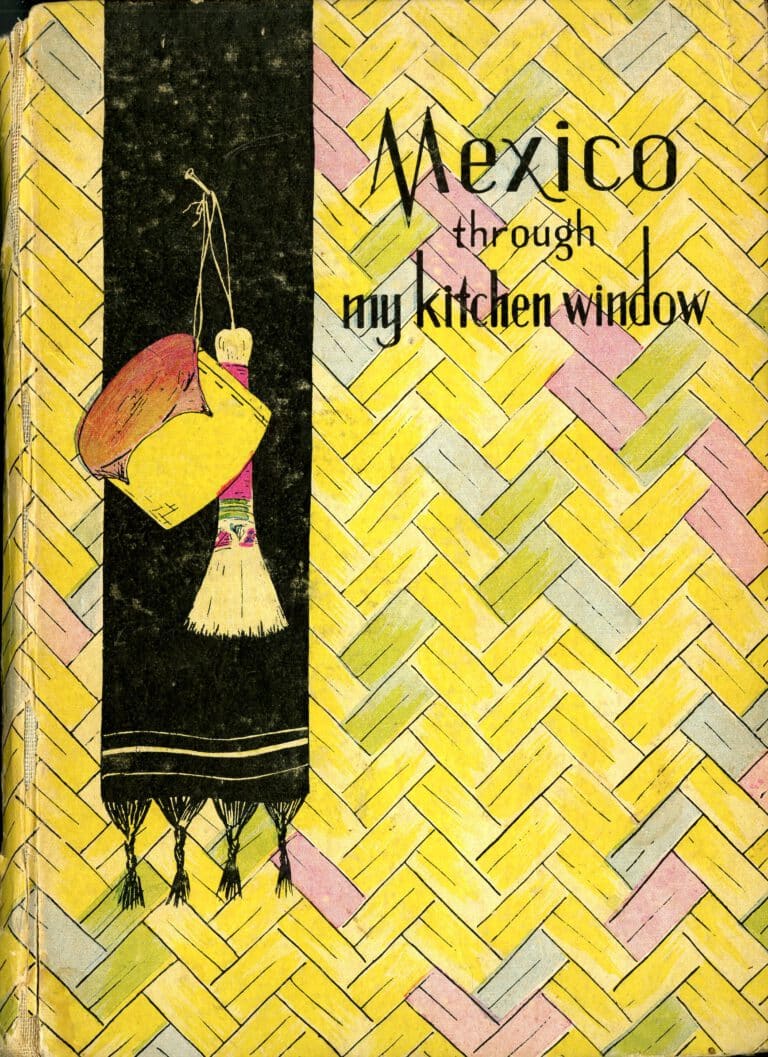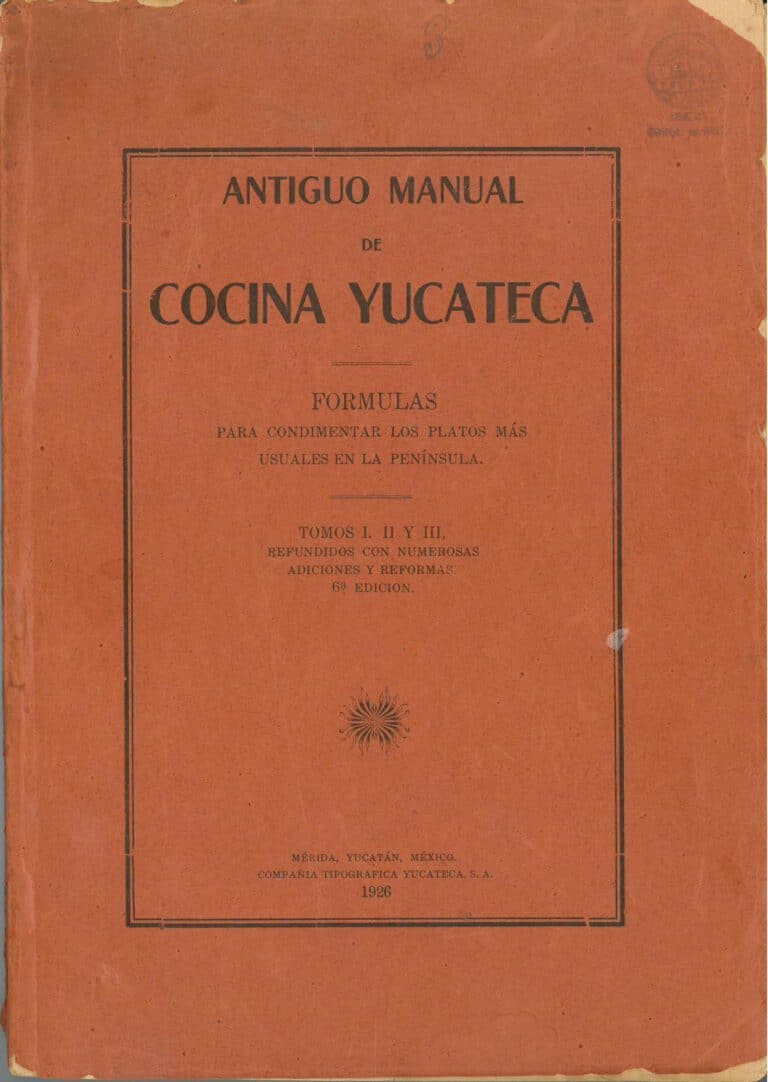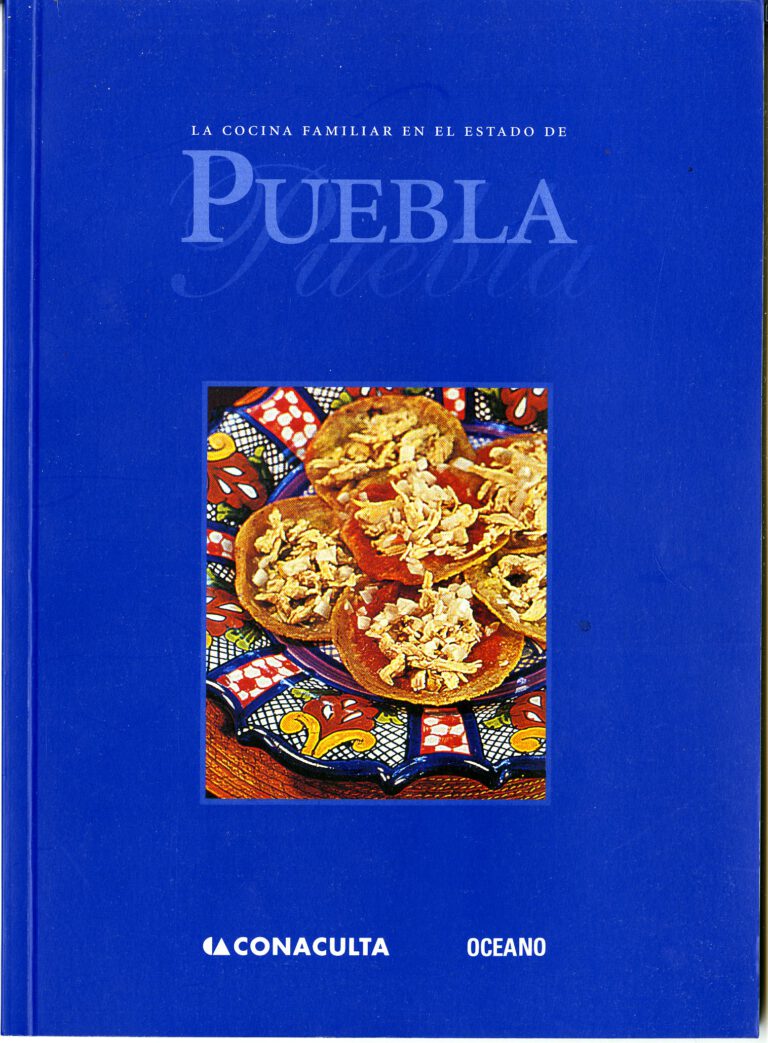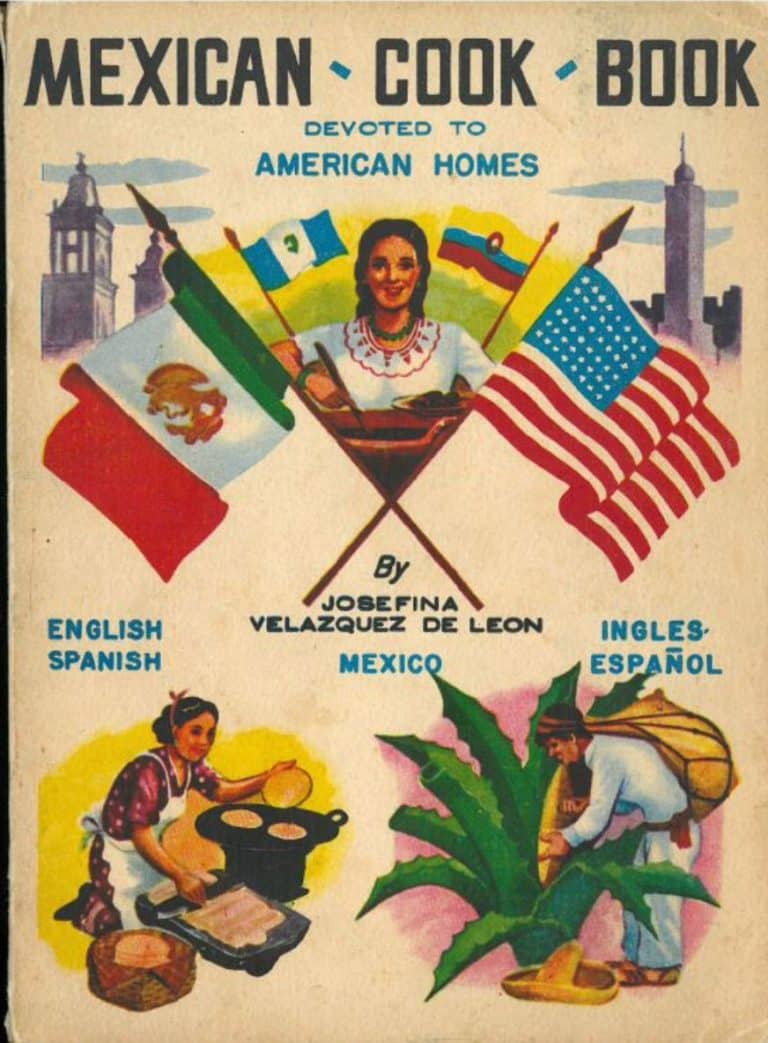Day 1 Menu Antiguo Manual de Cocina Yucateca 1926
Rendón de García, Hortensia. Antiguo Manual de Cocina Yucateca: Fórmulas paraa Condimentaar los Platos Más Usuales en la Península. Tomos I, II, y III, Refundidos con Numerosas Adiciones y Reformas. Mérida, Yucatán, México: Compañía Tipográfica Yucateca, 1926. [TX716.M4 A58 1926]
Día 1 / Day 1 Almuerzo / Lunch
- Huevos en chile de Veracruz / Eggs in Veracruz chiles.
- Carne en vino tinto / Beef in red wine.
- Calabacitas rellenas / Stuffed summer squash.
- Frijol Colorado, guisado / Stewed red beans
Recipes for three of the four recipes follow. However, “Huevos en chile de Veracruz” does not seem to appear anywhere in the book, neither in the Huevos, etc., etc. chapter, nor elsewhere. This phenomenon of supplementary material only partially overlapping with recipe-content is not uncommon, but the reason is rarely readily apparent. The author may have expected that particular dish to already be so well-known that a recipe would be superfluous. Or, perhaps there was a time lapse between the recipe manuscript being sent for type-setting and the publisher requesting menu suggestions. By that time, the author may not have perfectly remembered which recipes she chose to include.
Carne en vino tinto / Beef in red wine (56)
Se pone a freír un trozo de carne con pimiento molida, vinagre, sal y clavo; cuando ya esté bien frita se le pondrá agua suficiente para acabarla de cocer, más Manteca si fuese necesario y cebollas, ajos, tomates y un poco de vino tinto. Cuando quede en su manteca se suspende.
Fry a piece of beef with ground pepper, vinegar, salt, and cloves; when it is well-fried, add enough water to finish cooking, along with more lard (if necessary), onions, garlic, tomatoes, and a little red wine. When it stays in its fat, it is finished.
Translator’s Note: The last sentence is somewhat opaque. I believe, but am not certain, that it suggests the beef is finished when the surrounding liquid has largely evaporated and cooked down into a fatty sauce or gravy of lard, beef drippings, red wine, etc.
Calabacitas rellenas / Stuffed summer squash (149)
Se sancochan las calabacitas, se descoronan, se les quita un poco del centro con una cucharita. Se sancocha un pedazo de lomo de Puerco con sal, hojas de oregano, ajo y dos o tres pimientos enteras, luego se pica; aparte se pican dos o tres rebanadas de cebolla, tres o cuatro tomates y una rebanada de chile dulce, se fríe esto en Manteca; ya que esté bien frito, se echa el lomo a freír; se le pone también un poco de alcaparras, otro de pasas sin pepita y almendras, un poco de vino, vinagre, sal y la clara picada de un huevo sancochado; con este picadillo se rellenan las calabacitas, se tapan con huevo batido y se fríen. Se les pone salsa de harina como la de los chiles rellenos.
Parboil the summer squash; then cut off one end and remove a bit from the center of each one with a spoon. Parboil a piece of pork loin with salt, oregano, garlic, and two or three peppercorns. Separately, chop two or three strips of onion, three or four tomatoes, and a strip of chile dulce or bell pepper. Fry these in lard; when well-fried, add the pork loin to cook a bit more. Also add some capers, seedless raisins, and almonds, along with a little wine, vinegar, salt, and a chopped eggwhite (previously hard-boiled). Stuff the summer squash with the picadillo, top with beaten egg, and fry. Top with a flour-based sauce like that used for chiles rellenos.
Translator’s Note: Although not stated, the pork loin must be chopped up at some point to make the picadillo – my best guess would be after it is parboiled, but before it is added to the mix of frying vegetables.
Salsa from Chiles Rellenos Recipe (149)
Se prepara una salsa del modo siguiente: se rebana cebolla, tomates y chile dulce y se fríe: después de bien frito se le echa caldo de puchero y se le pone un poco de harina para espesar; también se le pone aceitunas, alcaparras y pasas.
Make the sauce as follows: Slice onions, tomatoes, and chile dulce or bell peppers and fry them. After these are well-fried, add a good broth to the pot with a little flour to thicken. Also, add olives, capers and raisins.
Cook’s Note: Although not stated here, when adding flour to thicken a sauce, it is wise to first mix the flour with a small amount of liquid in a glass with a fork or whisk, and then pour it into the pot. This helps prevent lumps.
Frijol Colorado, guisado / Stewed red beans (151)
Se pone a cocer una libra de frijol Colorado, ya que reviente y esté un poco espeso el caldo, se le pone cuatro onzas de jamón cortado en pedazos y cebolla, tomate y chile frito en Manteca.
Boil a pound of red beans, when some of the beans have burst and the water has become a thick broth, add four ounces of chopped ham, along with onion, tomatillo, and chiles – all of which have been fried in lard.
Translator’s Note: Frijol Colorado refers to kidney beans in some parts of South America, but I am not entirely confident that this was necessarily the mid-century Yucatecan usage. Regardless, the recipe is a basic one that should work well with any variety of beans.
Note regarding 11/8 Update: A reader pointed out to me that although tomate most frequently refers to tomatillos, in southeastern Mexico, it is used as a synonym of jitomate, and thus should be translated as tomato. The recipes above have been updated accordingly.

